10.01.29 Mt. 16:13-20 (See also Mk. 8:27-30; Lk. 9:18-20) Caesarea Philippi
PETER ACKNOWLEDGES JESUS AS THE ANOINTED ONE
13 When Jesus came to the region of Caesarea Philippi, He asked His disciples, “Who do people say that the Son of Man is?”
14 And they said, “Some say John the Baptist; others, Elijah; still others, Jeremiah or one of the prophets.”
15 “But you,” He asked them, “Who do you say that I am?”
16 Simon Peter answered, “You are the Messiah, the Son of the living God!”
17 And Jesus responded, “Simon son of Jonah, you are blessed because flesh and blood did not reveal this to you, but My Father in heaven. 18 And I also say to you that you are Peter, and on this rock I will build My church, and the forces of Hades will not overpower it. 19 I will give you the keys of the kingdom of heaven, and whatever you bind on earth is already bound in heaven, and whatever you loose on earth is already loosed in heaven.”
20 And He gave the disciples orders to tell no one that He was the Messiah.
“The region of Caesarea Philippi.” Caesarea Philippi, a/k/a Banias, was an ancient city of demonic worship at the base of Mount Hermon. On the side of a mountain, which is a huge cliff, is a cave out of which flowed the Jordan River until the mid-1800s when an earthquake changed the discharge of the river.[1] The Canaanites had two important beliefs concerning their god Baal and this cave.
- They believed that Baal went to Hades every fall, stayed there for the winter, and returned in the spring.[2] The mountain cave at Caesarea Philippi was not only the “gate” for Baal to enter and leave Hades, but it was also his place of authority, as represented by the water flowing out of the mountain.
- The also believed that Baal, their fertility god, lived in that cave. To appease him, they and their descendants practiced child sacrifice for centuries until the Greeks terminated the practice in the fourth century B.C.
Banias was sacred to gods such as Baal-Gad or Baal-Hermon in Old Testament times because the river that flowed out of the cave gave life to the surrounding land.[3] It was here where the Canaanites offered ritual sacrifices, and if the victims disappeared in the water that was a sign that the gods accepted the sacrifice. If, however, signs of blood appeared in a nearby spring, that was a sign that the sacrifice was rejected. A short distance to the west is the archaeological site of Tel Dan, where the Israelite tribe of Dan set up their own place of worship to the pagan deity Ashteroth.[4] But Israelite idolatry in this area went far beyond that.[5]
The ancients believed that certain caves were entrances to hell and the underworld of demons. This was especially true during the centuries of Greek and Roman domination.[6] Since they also believed that Pan lived in the cave on the bottom of Mount Hermon, they not only built a temple to worship him, but had his image on various mosaics and coins.[7]
In this passage, Jesus took His disciples to the most pagan place in Israel – a place known as Banias where the ancient Canaanites once offered live infants to their god. Since then it was a shrine of the Greek god Pan, a pagan deity said to be half human and half goat. In Greek mythology, Pan kept order among the other gods who often fought among themselves. Into this sinful place Jesus brought the disciples and asked them, “Who do you say that I am?” They acknowledged that He was the supreme Son of God. Then Jesus responded to Peter and said that the forces of Hades would not overcome the church. Some translations state that the gates of hell would not overcome the church.
The term “gates” suggests a place of authority, because in ancient Israel the city gate was where the local government council met and where businessmen conducted their affairs. By the first century, government buildings were established and the gates no longer functioned as locations of authority, but the imagery remained the same. That is why Jesus told Peter that he (Peter) would receive the keys of the kingdom – meaning the authority of the kingdom of God.
After Alexander the Great conquered the region, the pagan sanctuary to Baal was rebuilt and the name of the god was changed to Pan, a Greek deity.[8] He was the god of wild animals and sexual pleasures. In fact, it was so indulgent in every imaginable sexual pleasure that it was known as “the Corinth of the East,” and “the Gate of Hades (Hell or Death).” It was also one of the few cities in the empire where homosexuality was celebrated. Little wonder then, that the Jewish people said it was one of the three gates to hell (some sources say “gates of death”).[9] Years later the sanctuary was enlarged by Herod the Great who also built a temple with imported white marble that featured a godhead of Caesar. After the passing of Herod, his son Herod Philip continued the expansion of the city and renamed it in honor of Caesar. However, since his father had built another city along the Mediterranean Coast in honor of Caesar, Philip also gave the city a last name to honor himself.[10] Hence, the name Philippi means of Philip or Caesarea Philippi.[11] During Roman occupation, Caesarea Philippi was a favorite place for soldiers to rest, relax, and enjoy a festive vacation.
Pan, or Panias, according to Greek mythology, kept peace among the other gods and, therefore, the palace of the gods was known as the “Pantheon.” Today, the site is known as “Banias” because the Arabs who moved into the region in A.D. 636, could not pronounce the letter “P.”[12] Pan was pictured as a goat-demon (Heb. sair 8163),[13] the half-man and half-goat god who lived in the woodlands, mountains, and lush green stream of the Jordan River. In Old Testament times, Gentiles from all nearby regions came to worship him, as did the Israelites at times (Lev. 17:7; 2 Chron. 11:15; 2 Kgs. 23:8).
Jesus had led His disciples to this shrine of Pan, the supreme god of the Greeks. It was there where Jesus presented them with the single most important question of all humanity – Who do you say that I am? Decades later, after Titus destroyed Jerusalem and the temple in A.D. 70, he traveled up the Jordan River to offer thanks to Pan for his victory over the Jews and their God.
At this time Jesus looked ahead to the time He would face His ultimate challenge – dying on the cross. So He took the disciples from the Galilee area and walked north about twenty-five miles along the Jordan River into Gentile territory where the Jordan River flowed out of a cave at the shrine of Pan. It was there, in the midst of the worst pagan place of His day that Jesus challenged Peter and the chosen Twelve with the question, “Who do you say that I am?”
“Who do you say that I am?” Undoubtedly this is the most important question anyone is ever asked. He did not ask, what do people think of what I am teaching or what do they think about my miracles? “Who do you say that I am?” is a question that forces one to acknowledge or deny His deity. Jesus wanted to know if the faith of His disciples was deeper than that of crowds. An answer of uncertainty or doubt simply underscores one’s lack of knowledge or faith. Only an affirmative answer is acceptable. When Jesus asked this question, it was done in the shadow of multiple gods in a pagan culture where Judaism was obviously the minority religion. The question was not addressed to Peter, as is often thought, but to the group. The word for you is plural – meaning everyone in the group.[14] But only Peter had the courage to give the answer, and it was the right answer as he acknowledged both the words and work of Jesus. As to the identity of Jesus, there were a number of popular answers among the people. Some believed that,
- He was John the Baptist raised from the dead, but functioning under a different name.
- He had the spirit of John the Baptist.
- He was Elias, who like Enoch, never died.
- Some believed He was Jeremiah who returned to reveal the Ark and sacred vessels which supposedly He hid on Mount Nebo.[15]
- Or He was one of the other prophets.
When Jesus asked Simon Peter, “Who do you say I am?” Peter responded with, “You are the Christ, the Son of the living God.” The statement was said at the pagan shrine of Pan, where demonic influences were supreme. In this spiritual environment, when Jesus said, “the gates of Hades (Hell) will not overcome it [the church],” He clearly meant that the authority and power of Satan would not overcome the believers of His church (cf. Isa. 38:10).[16] Jesus had a second motive with His question. He affirmed the fact that He was not the military messiah that many were expecting, but rather, He was speaking of a heavenly kingdom.[17]
It may surprise the modern student of biblical studies that the teachings of Jesus did not differ much from those teachings of orthodox rabbis who loved their people and were committed to serving God in the best way they could. But all too often their teachings are lost with the writings of many diverse opinions of other rabbis. The difference between Jesus and the rabbis who taught His message was His identity – and that was an issue all had to grapple with. That is why Jesus asked, “Who do you say that I am?” and not, “What do people think of my teaching?”[18]
It should be noted that at times some characteristics or qualities of words are lost in translations. While the statements “Who do you say that I am?” and “You are the Messiah, the Son of the living God” are accurately translated, the full tone or emphasis is lost in translation.[19] The Greek is stronger in tone and emphasis than is the English, so the the response to the question would literally be, “You are the Messiah, the Son, of the living God,” [20] that in Hebrew is Antah Meschicha.[21]
Peter could hardly emphasize his response any more than he did by this statement. The first and second century church fathers recognized that it was Peter’s confession and not Peter personally, that was the foundation of faith.[22] They also recognized that the entire conversation reflected upon how Jesus related to Exodus 3:14 as well as other “I am” statements in the book of John.[23] He was and continues to be the Malka Meschicha – the King Messiah – to those who know Him best.[24]
Peter made this profound statement because he realized that Jesus was functioning prophetically in accordance with Old Testament Scripture. Jesus finally acknowledged to the disciples that He was the expectant Messiah.[25] It is noteworthy that Jesus seldom used the term “Christ” in reference to Himself due to the incredible strong political overtones associated with it. Only in His later ministry would He use it, and then with a defined meaning (Mk. 8:31).
“Simon son of Jonah, you are blessed because flesh and blood did not reveal this to you, but My Father in heaven.” Jesus tells Peter that he finally got it right (he has a long history for saying the wrong words at the wrong time). This response by Jesus is a “thematic statement”[26] in which there is a theme, the first statement, which is then followed by two parallel lines that expand and expound the theme. This is followed by a complimentary theme statement.
“Simon son of Jonah,[27]
you are blessed because flesh and blood did not reveal this to you,
but My Father in heaven.”
The thematic statement above is balanced by the following thematic statement:
“And I also say to you that you are Peter,
and on this rock I will build My church
The forces of Hades will not overpower it.”
“And I also say to you that you are Peter, and on this rock I will build My church.” The two key words in this statement are “Peter” and “church,” and both need to be carefully examined. As to the name Peter, as is often the case in Jewish literature, there is a play on words in this passage. The word play Petros and petra are word plays that are puns on both Greek and Hebrew – in that the Greek words became loan words[28] in Hebrew as found in the Midrash.[29] What Jesus really said to him was, you are petros, and on this petra (meaning rock)[30] will build my church. The difficulty arises because the name Peter in Aramaic means little stone.[31] Therefore, it is quite easy to assume that Jesus used a play on words in this passage, and that Peter was to be assigned a prominent role in the future church.[32] However, when the grammar is carefully examined, this interpretation cannot be considered relevant, since Peter is in the masculine form and the word rock is in the feminine form.[33] For Jesus to have applied the feminine form to address Peter, would have been highly insulting, especially after He had just made this famous declaration.[34]
Isaiah (51:1-2) told Israel to look to the rock from which you were hewn and the quarry from which you came. The prophet meant that the rock was Abraham and the quarry was Sarah who gave birth to Isaac.[35] Furthermore, rabbinic sources sometimes understood the “rock” as Abraham on which God founded the entire world.[36] Throughout the Old Testament, the word rock is symbolic of Jesus (Isa. 28:16). This symbolism was carried over into Peter’s conversation with Jesus. The rock was therefore, the confession of Peter, who said that Jesus was the Christ. This would ultimately point to Jesus’ being the Rock Himself, as recorded in 1 Corinthians 10:4, and the “Cornerstone” in Ephesians 2:20b.[37] But Peter, at this point, was clearly too much of an unstable person. It would not be until after the resurrection and the breath of the Holy Spirit that Jesus breathed upon him on Resurrection Day (Jn. 20:19-23), an event known by theologians as the “Johanine Pentecost,”[38] that his inner man would be completely recreated. Only then did he become an effective apostle and was able to preach a powerful sermon before the Holy Spirit fell on the Day of Pentecost.
It should be noted that those who believe that Peter personally was the foundation upon which the church was built do so based upon Ephesians 2:20a that reads, “… built on the foundations of the apostles and prophets.”[39] However, this too does not refer to them personally or their leadership, but the term foundations is a reference to their teaching and testimony that was the same message spoken by Jesus. Therefore, it agrees with the above interpretation that the rock is the spoken word of Christ Jesus (Mt. 21:42; 1 Cor. 3:11). The interpretation expressed herein is the viewpoint of the Protestant Church. Historically, believers in the early church have strongly defended this position. The Roman Catholic Church, on the other hand, has used this Scripture as a foundation of the Pope and related doctrines.
It is quite interesting that Jesus made this statement in light of the fact that He was a Jew and had focused His ministry on the Jewish people. He did not tell Peter He was going to build a new synagogue or branch within Judaism. The first Christian community was not a separate faith but functioned within Judaism. There is nothing more that Jesus would have preferred than to see His brothers and sisters spread His gospel of the Kingdom of God throughout the world. The statement to Peter was prophetic in the sense that Jesus understood that He would be rejected and a church would grow out of Judaism.
The word “church” is translated from the Greek word ekklesia (1577) and it appears only here and in Matthew 18:15-20. It is better translated to mean congregation (Gk. qadam 6923), or assembly.[40] The Hebrew word almost certainly would have been quahal which is used throughout the Hebrew Bible to mean the congregation of Israel.[41] Since there was no concept of a “church” at this time, did Jesus create a new word? If He did, how is it that His disciples understood it? Only in the book of Acts, after the day of Pentecost, is the word for church is used with regularity. It should be noted, however, that Jesus did not invent a new word for church but used an existing word meaning an assembly.[42]
The term is ecclesia, and it originally it meant an assembly of citizens who were regularly assembled.[43] That was the definition in ancient Greece, but in the Jewish world it meant congregation.[44] The term congregation is a better term than church, as the latter means House of the Lord.[45] The true word for church is generally not derived from ekklesia or ecclesia, but from the Greek word kyriake, as is found in 1 Corinthians 11:20 (our Lord’s supper) and Rev. 1:10 (our Lord’s Day).[46] On the other hand, the word kyriake, which means belonging to the Lord, is never used in relation to an assembly of believers except here.
Concerning the Greek word ecclesia, it is found in earlier Greek writings by Herodotus, Thucydides, Xenophon, Plato, and Euripides, whose works go back five centuries.[47] In Greek society, it was an assembly of free voting citizens. Furthermore, ecclesia is in the second century B.C. Septuagint translation – meaning “congregation of Israel.”[48] While the word “church” clearly is an assembly, it was not the best translation in this passage. How then did this occur?[49]
When the King James translation was being written, the King had ordered the word “church” to be used instead of the more accurate “assembly” in spite of the protests of his translators. Since then the King James Version has been the powerful icon in evangelical Christianity, so much that recent translations have been resistant to use the more accurate word in fear of criticism from the faithful who, not understanding Greek or British history, would say that these translations are leaning away from biblical truth.[50]
“The forces of Hades will not overpower it.” Literally, this phrase literally means the gates of Hades will not prevail,[51] or the gates of hell will not overcome it.[52] The words Hades and hell have at times become interchangeable. The forces of Hades or gates of Hades, in the Old Testament refer to physical death.[53] The term sheol has at times been incorrectly translated as hell. The Old Testament concept of sheol is not a place of torment, but a temporary condition during the Old Testament Dispensation.[54] For that reason the patriarchs are described in Hebrews 9:16 as looking for a better heavenly place. The New Testament understanding of heaven and hell is not related to sheol.[55]
Video Insert >
10.01.29.V The Gates of Hades as an Image of the Tomb of Christ. Dr. John Soden discusses the imagery of the “Gates of Hades” from which Jesus would arise. (5:45)
As to the term, “gates,” city gates of prior centuries served a military function as well as a place to hold business meetings or to discuss issues of government. When “Lot was sitting in the gateway of the city” (Gen. 19:1), he was not relaxing but held a prominent seat in the local government and/or the business community. Abraham was “at the city gate” when he negotiated and purchased a parcel of land, which was observed by many witnesses (Gen. 23:10-18). If a man accidentally killed another, he was to go to the city of refuge and discuss the matter with the elders at the city gate (Jos. 20:4). Before Boaz could marry Ruth, he had to settle certain kinsman-redeemer issues with her relatives and this was done at the city gate in the presence of ten witnesses (Ruth 4:1-12). It was the place where social decisions, business transactions, and public punishment were executed.[56] The city gate was representative of the supreme authority of the community.[57]
However, in the fifteen centuries between Moses and Jesus, some changes developed. For example, governments had their own buildings and punishments for religious violators were meted out at the temple or synagogue. The Sanhedrin had its own courtroom and the local monarchs had their own palaces where they discussed the affairs of state. Yet in smaller cities, business people signed contracts and resolved issues in the rooms adjacent to the city gates.
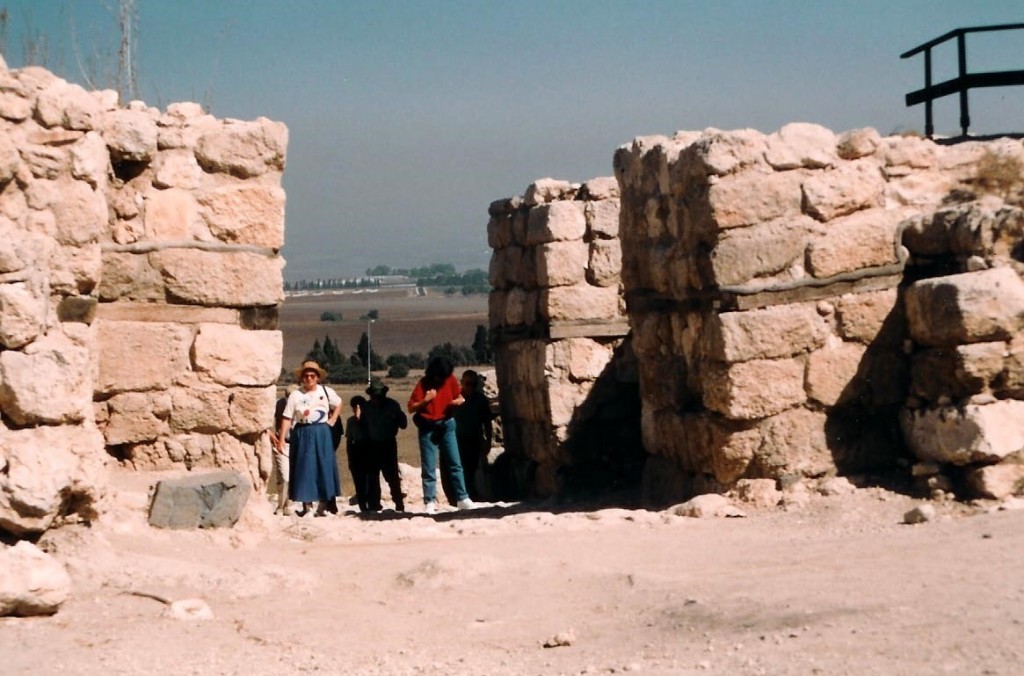
10.01.29.A. THE CITY GATES OF MEGIDDO. Tourists stand where in ancient times the city council members would gather to render judgment on legal cases and resolve community problems. The city gate was often the place of legal authority in ancient times. Photograph by the author.
Hades, according to Greek mythology, was the god of the underworld. The Greek writers created him with two brothers, Poseidon, who ruled the seas and earthquakes while Zeus ruled the skies and weather.[58] Zeus was said to control the rain and, therefore, was the fertility god. Poseidon was the earth shaker and holder of the earth. But Hades was deemed to be the most hateful toward people as described by Homer.
Let him then yield – it is only Hades who is utterly ruthless and unyielding – and hence of all the gods the one most hateful to mankind.
Homer, The Iliad 9:160-162
While Jesus used the phrase gates of Hades, in this discussion, the same expression is found in Greek mythology, Hades of the Gates, which alluded to the gate of death or hell from which there was no return. Furthermore, the River Styx is the river that flowed into Hades at the Gate.[59] According to Greek mythology, when someone died, he or she would have to cross the River Styx to enter paradise. However, the river flowed into hell (literally, the hell of fire),[60] and could not be crossed without help. That helper was a ferryman named Charon to whom the deceased had to pay a fee to take him or her on his ferry and cross the river to enter paradise. Otherwise, eternity in hell was a certainty.[61]
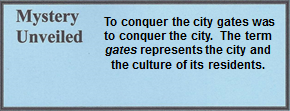
The journey to Caesarea Philippi most certainly had a profound impact on the disciples, all of whom would have been very familiar with the myths and religions of their Greek neighbors. Jesus alluded to the River Styx that flowed into hell while standing in front of the most pagan shrine in northern Galilee where the Jordan River flowed out of a cave. The Greek writer Homer preserved the imagery when describing the conflict between the gods:
He would weep until his cry came up to heaven, and then Zeus would send me down to help him. If I had any sense to foresee all this when Eurystheus sent him to the house of Hades, to fetch the hell-bound from Erebus, he would never come back alive out of the deep waters of the River Styx, and now Zeus hates me.
Homer, The Iliad 8:366-369
Clearly, the mental picture Jesus painted for His disciples was far more profound than is normally considered today. The confrontation of demons in the biblical narrative has, unfortunately, been overlooked all too often. Jesus asserted His dominion over each of these demons.[62]
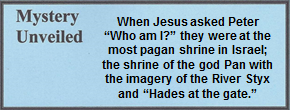
“The keys of the kingdom of Heaven.” The key was always the symbol of authority (Isa. 22:20-22) and Jesus clearly used it in reference to spiritual authority. Just after He told the disciples that the supreme authority of hell and the demonic forces would not prevail against them, He also told them that they had the authority of heaven.[63] This was simply another way of saying they had the authority of God. The phrases keys of the kingdom, and keys of Hades, were clearly understood in a spiritual sense because the word keys was often used as a standard element in spiritual warfare in exorcisms or magical charms.
While some critics claim this phrase was not of a spiritual dimension, but of later legislative action for the synagogue and church, it is interesting that many magical writings have been discovered to clearly point to a spiritual warfare context. One such writing was found in Egypt. It is on a rolled-up lead tablet hidden in a clay vase along with a clay statuette of a kneeling woman, hands bound behind her back and full of piercing needles. While the text was complete and a rare find, only a portion is needed to affirm the use of keys as used by Jesus. The magical text reads as this:
Anoubis the strong, who holds the keys of Hades, divine demons of the underworld, youths and maidens who died before their time, year by year…. Drag her by the hair, tear at her guts, until she does not reject me….
Egyptian Magical Text[64]
Ironically, this Egyptian magical text affirms two points:
- The ancients believe that it was Satan who stole, killed, and destroyed (see Jn. 10:10).
- The ancients believed there were keys of authority to the underworld.
There can be no question that Jesus had reference to spiritual warfare in this discussion.[65] On a related issue, the keys to royal chambers were entrusted to the chief steward, who carried them upon his shoulder (Isa. 22:22). To be entrusted with keys was not only a reflection of rank and honor before the king, but also of the authority to function for the king, which alludes directly to the Hebraic idiom of “binding and loosing/loosening.”[66]
For Peter “the key” had significant metaphorical meanings as follows. After Jesus gave Peter the key of divine authority,[67] He then proclaimed the gospel to the Jews (Acts 2). Philip went into Samaria to evangelize (Acts 8), but the Jerusalem church sent Peter and John to him (Acts 8:14-17) to receive the Holy Spirit. Hence, the keys of authority were transferred to Philip. In Acts 9 Paul was saved and in Acts 10 Peter was sent to the house of Cornelius, and the keys of authority were transferred again. According to Acts 1:8, the gospel was to go first to the Jews, then to the Samaritans, and then to the whole world. Peter opened the door of the gospel to all three groups in that precise order. First Corinthians 12:13 went into full effect.
“Bind on earth … loose on earth.” This Hebraic idiom was used to express the rabbinical authority to either forbid or permit various activities in the synagogue. The rabbis functioned as if they were entrusted with a limited degree of divine authority concerning the affairs of the people under their ministry. This concept was continued in the early church and is demonstrated in Acts 15:1-11 with the following three examples:
- Peter gave a stinging rebuke to Ananias and Sapphira for their deceitfulness.
- Paul functioned with this authority in I Corinthians 5:3 when he stated, “And I have already passed judgment on the one who did this.”
- Finally, when the Jerusalem Council met to consider issues related to Gentile believers (Acts 15:1-29), they invoked this rabbinic tradition that was endorsed and extended by Jesus when they decided that their decision was based on what “seemed good to the Holy Spirit and to us.”
The phrase “Bind on earth … loose on earth,” does not mean that Satan was completely defeated and destroyed, because the work of the cross did not change the status of the earth and humanity to the pre-fall innocence of the Garden of Eden. It does mean, however, that Satan’s power is broken and his activity is curbed.[68] A definition summary is presented for each term:
“To loose.” (Gk. luo 3089; Heb mutar).[69] “Freeing of those in prison”[70] “The opening of things that are closed.”[71] “To loose, release, to free, to dissolve, to dismiss or set aside.”[72] By the sacrificial blood of Jesus a person can be loosed from sin (1 Jn. 1:9), attacks and bondage created by Satan (Lk. 13:12, 16; 1 Jn. 3:8), bondage of the tongue (Mk. 7:35), debt (Mt. 18:27), unjustifiable imprisonment (Acts 22:25-30), and sickness (Lk. 13:12).[73]
“To bind” (Gk. deo 1210; Heb asur)[74] “To wrap up,” “to bind together,” or “to chain.” The word is also related to “imprisonment, supernatural binding, declaring forbidden or permitted, imposing or removing an obligation, imposing and removing a ban.”[75] Some scholars present a modern definition of “overcoming” meaning to be victorious.[76]
The terms are illustrated in the Hebrew Bible in both physical and spiritual senses. In Psalm 105:17-22, Joseph is bound and sold into slavery, then freed from his imprisonment, and became a ruler with the authority to bind others (cf. Gen. 41).[77] While some have applied this physical illustration to the spiritual world,[78] a clearer example of the domains was written by a later prophet. When writing of true fasting, Isaiah said that it will,
Loose the chains of injustice and
untie the cords of the yoke …
Set the oppressed free
and break every yoke
Isaiah 58:6
The chains of injustice and freedom of the oppressed could have both a physical and spiritual interpretation. However, the context suggests a strong spiritual interpretation. Often the authors of extra-biblical books wrote their opinions reflective of the Hebrew Bible. In essence, the authors tell modern scholars that they believed in a literal interpretation of Isaiah concerning loosening and binding. Two examples based upon Isaiah are:
For no one takes plunder away from a strong man,
so who is going to take (anything) from that
you have done, unless you give (it)?
Psalms of Solomon 5:3[79]
And he shall open the gates of paradise;[80]
he shall remove the sword that has threatened since Adam,
and he will grant to the saints to eat of the tree of life.[81]
The spirit of holiness shall be upon them.
And Beliar shall be bound by him.
And he shall grant to his children the authority to trample on wicked spirits.
And the Lord will rejoice in his children;
he will be well pleased by his beloved ones forever.
Testament of Levi 18:12[82]
The dates of these writings are significant. The Psalms of Solomon is believed to have been written in the mid-first century B.C., [83] only a few years before Christ[84] and reflects public opinion of the time. It also has many parallels with 1 Baruch of the late first century. On the other hand, the Testament of Levi, a part of a larger work known as the Testaments of the Twelve Patriarchs, is older, possibly as early as the mid-third century B.C., as determined by its use of the Septuagint.[85] The fact that it is believed to have been written in Galilee, suggests that its popularity spread quickly.[86] Therefore, both passages frame the time of Christ, clearly indicating the common opinion that the children of God had authority over demonic forces. This interpretation of these passages is rather simple, and, to use an age-old rule of hermeneutics: “If the literal sense makes common sense, use no other sense.”
There are other writings as well. In Tobit 8:1-3 an angel bound a demon and demanded it to leave. The author of another book also believed that certain angels were assigned to the task of binding as illustrated in 1 Enoch 10:4-12,[87] but the most notable is verse 4 which reads:
And secondly the Lord said to Raphael,[88] “bind Azaz’el hand and foot (and) throw him into darkness.”
1 Enoch 10:4[89]
Jesus did not make reference to “loosening and binding” per se, although He demonstrated this frequently in the performance of exorcisms. When He commanded spirits to leave the demon-possessed or spoke healing to those afflicted, He was fully exercising the divine powers in “loosening and binding.”
The only authority the believer has is that which is God-given and, therefore, it is imperative to be in covenant with God and operate in His wisdom, and spiritual discernment. When Paul wrote to the Colossians he stated that the believer is established and complete in Christ (Col. 2:6-7, 9-10) and that Christ has dominion over every other power and authority (Col. 2:10b). Therefore, because the believer has put off his sinful nature, he is alive in power with Christ (Col. 2:13). All influences exerted by believers, whether by loosening and binding, or by prayer, are most effective when the believer is in right relationship with God. Ancient writings do not mention “right relationship,” per se, but this was an assumption for any effective religious function. That is why there was an extremely heavy emphasis on purity in the life of an observant Jew in the time of Christ.
Some scholars believe that only Jesus could bind the “strong man,” as this has specific reference to Jesus who did the binding. It is only because of Jesus, however, that the believer can also bind the “strong man.” Furthermore, the effectiveness of the believer is based upon his obedience to live in covenant with God, prayer, fasting, and the prayer support of other believers. Peter is an example of one who received the authority to bind and loose (Mt. 16:19) before the death and resurrection of Jesus, and obviously before Pentecost. Likewise, empowerment was given to the disciples specifically to heal every disease and sickness and drive out evil spirits (Mt. 10:1). But some theologians believe this authority was limited to the disciples and possibly a few others, and as they died out the authority likewise ended. There is, however, no predictive biblical evidence that this would occur. In fact, in his letter to the Ephesians Paul specifically said that our struggle was against demonic powers (Eph. 6:12). Because believers are “in Christ,” whatever authority they have exists only when they function “in the name of Jesus” (Acts 16:18).
Didn’t Jesus bind the “strong man?” When Jesus confronted Satan after forty days in the desert wilderness, Jesus had victory over His tempter and the evil one left for another opportune time to attack (Lk. 4:13). When Jesus died on the cross Satan was condemned (Jn. 16:11). All the demonic forces thought they had won, but were surprised on Resurrection Day. When Jesus defeated Satan, He did not restore the earth to its primordial day of the Garden of Eden. He not only paid the sacrifice for the sins of humanity, but also empowered believers to be His effective agents to spread the Kingdom of God. Eventually there will be a final binding of Satan and his evil angels (Rev. 20:2) after which they will no longer have any influence upon those who are in Christ. It is critical for believers to know that only what has been bound in heaven can be bound on earth.[90] As the Church seeks the guidance of our Lord, believers will be responsive to what has already been established in heaven. Hence, the phrase from our Lord’s Prayer, “Thy will be done on earth as it is in heaven.” Anything else is foolishness.
A significant point to remember is that binding and loosening is not indiscriminate any more than prayer is indiscriminate. Just as both originate in heaven, believers are expected to be directed by the Holy Spirit in the function of both.[91]
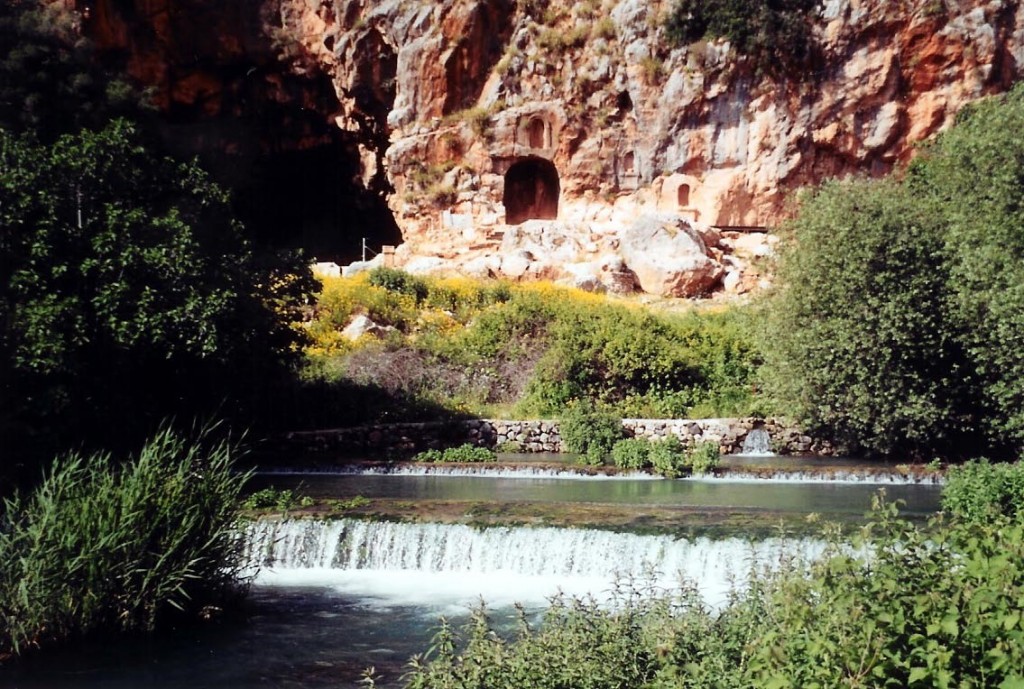
10.01.29.B. BANIAS AND THE CAVE OF PAN. The Banias River flows mightily from the Cave of Pan at the foot of Mount Hermon and is one of the three tributaries of the Jordan River. Jesus said that Peter was like a little rock in the river, but His church would be like the massive rock (cliff). Photograph by the author.
Conclusion: Today both messianic and Christian scholars continue to debate the meaning of “binding and loosening.” Some believe the term refers to legislative actions of the church while others believe there is a spiritual dimension that, of course, has to agree with biblical doctrines. Those who believe the term is a reference to legislative actions appear to base their opinions largely upon the work of seventeenth century scholar John Lightfoot.
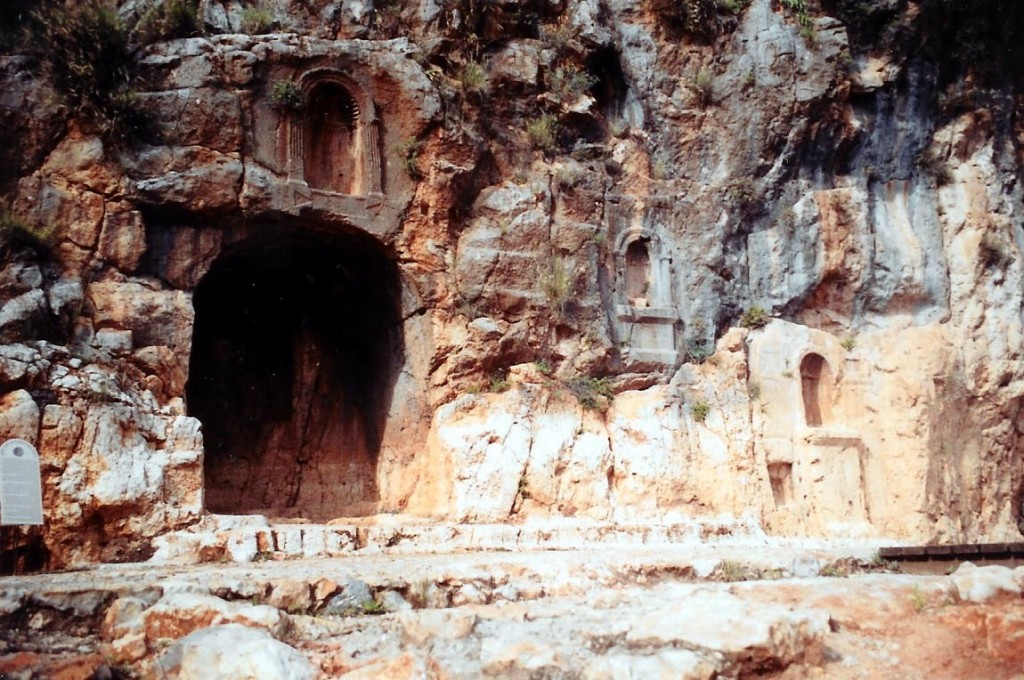
10.01.29.C. NICHES FOR THE IDOLS OF PAN AND OTHER GREEK GODS. In these niches, the idols of pagan gods once stood when Jesus asked His famous question, “Who do you say that I am?” From a large cave in the base of Mount Hermon flowed the River Banias, the major source of water for the Jordan River. In 1837, an earthquake collapsed a portion of the cave and the river now gushes from a nearby opening in the mountain. Photograph by the author.
John Lightfoot (1602-1675) [92] was a Protestant scholar who wrote a huge commentary on the New Testament after studying the Talmud and other Jewish writings. His work has contributed greatly to those who attempted to connect Christianity to its Jewish roots. In His study of Matthew 16:19,[93] he presented numerous quotations all of which support his interpretation that loosening and binding, as well as the keys to the kingdom, are related to legislative actions in the synagogue. This would clearly remove any possibility of these passages referring to binding or restricting of spiritual forces. Since he truly was a highly respected scholar, and continues to deserve this honor, many students of Scripture have accepted his conclusions. Teachers and pastors today who hold the understanding that Matthew spoke of legislative actions (in 16:19; 18:18) based their theology on his study of the Jewish writings. Furthermore, some point to Isaiah 45:11 and correctly state that God is not to be at the command of His creation.
Unfortunately, Lightfoot examined later rabbinic writings and failed to investigate the earlier manuscripts which reflected the common opinions of the first centuries B.C. and A.D. Furthermore, many magical papyri have been discovered in the past two centuries that he was obviously not aware of. There are several writings in the time frame of Christ that clearly defined an interpretation of spiritual dynamics. Today, at the other end of the theological debate are those who bind and loose almost everything in sight and have taken the doctrine of loosening and binding to the point that God is their servant rather than they be the servant of God. Somewhere in the middle are those churches that believe that binding and loosening is reserved for members of the clergy. A smaller number believe that this doctrine is for all believers, but that it must be properly used and the believer must understand some basic spiritual principals that are involved. This paper will examine this doctrine within the limits of Matthew 12:29; 16:19; and 18:18.
All agree that Jesus, a Jewish rabbi, thought, acted, and ministered within the cultural norms of the day in communicating His message of the Kingdom of God and the plan of salvation. The ancient writings of the primitive first century Jewish church provide overwhelming evidence to the interpretation that the phrase not only had specific reference to spiritual warfare, but that it was common in the Jewish world of Jesus. Yet evidence to any other interpretation is remarkably absent and does not appear until several centuries later in church and synagogue doctrines.
There is little doubt that after the resurrection of Jesus, the disciples reflected upon this discussion and the response Peter gave to Jesus’ question. They would remember that He not only cast out demons, but He led his disciples into the center of demonic activity and there proclaimed who He was – King of kings, Lord of lords, and He had absolute power and authority over evil spirits. It was here at the sanctuary at Pan that Jesus said that his church would be victorious over the demonic strongholds. The supreme authority of the underworld would be under the foot of the church.
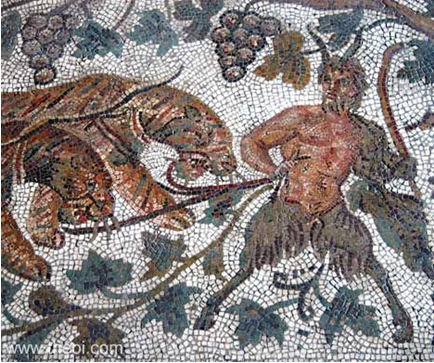 10.01.29.D. MOSAIC OF THE GOD PAN BEFORE THE TIGER-DRAWN CHARIOT OF DIONYSIS. This 3rd century A.D. Roman mosaic depicts the god Pan with two goat horns, goat legs, and human torso, head and arms. He was considered to be the supreme god of all Greek and Roman deities, which is why the Greeks named the Pantheon in his honor. Today’s image of Satan may have originated with the image of Pan. Courtesy of the Bardo Museum, Tunis, Tunisia.[94]
10.01.29.D. MOSAIC OF THE GOD PAN BEFORE THE TIGER-DRAWN CHARIOT OF DIONYSIS. This 3rd century A.D. Roman mosaic depicts the god Pan with two goat horns, goat legs, and human torso, head and arms. He was considered to be the supreme god of all Greek and Roman deities, which is why the Greeks named the Pantheon in his honor. Today’s image of Satan may have originated with the image of Pan. Courtesy of the Bardo Museum, Tunis, Tunisia.[94]
“And He gave the disciples orders to tell no one that He was the Messiah.” Jesus was not interested in self-promotion. His acts should speak for themselves. The ongoing problem He had to contend with was the fact that the sons of Herod had their spies at all public gatherings expecting Jesus, or anyone else for that matter, to declare Him to be “The Christ.” The Herodians and Romans were quick to crush any expectant messiah who would attempt to liberate the Jews. Therefore, while the disciples knew Jesus to be the long expected Messiah, the Jewish populace at large remained unaware of this. As previously stated, the challenge He faced was that the people had radically different expectations of what the Messiah would do and who he would be. If Jesus had made an outright public announcement that He was the Messiah, His declaration would have resulted in a Roman assault on Him and the disciples. Hence, He only alluded to His Messiahship. It also permitted the Jewish people to rethink their ideas of the messiah.
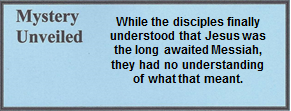
[1]. Part of the cave collapsed in the mid-1800s due to an earthquake and the Jordan River now flows out of another opening in the mountain.
[2]. The Canaanites lived in the land at the time when Joshua and the Hebrew children invaded the area in the 15th century B.C. It is believed that they, the Canaanites, originally established the pagan worship center in Caesarea Philippi.
[3]. Josh. 11:17; Judges 3:3; 1 Ch. 5:23.
[4]. In Judges 18:27-29 the site is called Laish, but after Joshua’s conquest it was called Leshem (Judges 19:47).
[5]. For example, it was at nearby Dan and Bethel where Jeroboam erected two golden calves to be worshiped as gods (2 Kgs. 10:29; 2 Chron. 13:8).
[6]. Another example of a cave the ancients believed was an entrance to Hades, or hell, was uncovered by Italian archaeologists in early 2013. At the site of Hierapolis in Turkey, they discovered one of the ancient “Gates of Hades” by a cave, which, like Caesarea Philippi, was also a site of significant pagan worship. See “Gate to Hell Found at Hierapolis.” Artifax. (28:2) Spring 2013. 9.
[7]. Hendin, Guide to Biblical Coins. 130.
[8]. Carter, 13 Crucial Questions. 14.
[9]. Some Jews believed the three gates to hell were 1. Banias, the most pagan worship site in Israel, 2. the desert (Num. 16:33), and 3. the bottom of any sea (Jonah 2:20). Others believed that one of those gates was in Jerusalem (Isa. 31:9) instead of Banias. See also Lightfoot, A Commentary on the New Testament from the Talmud and Hebraica. 2:110.
[10]. Carson, “Matthew.” 8:364.
[11]. Barclay, “Matthew.” 2:135.
[12]. Crossan and Reed, Excavating Jesus. 98-99.
[13]. Vine, “Goat-Demons.” Vine’s Complete Expository Dictionary. 1:96.
[14]. Smith, Augsburg Commentary on the New Testament: Matthew. 198.
[15]. Geikie, The Life and Words of Christ. 2:239.
[16]. Bock, Jesus According to Scripture. 231.
[17]. The response to the question, “Who do you say I am?” is further given in 04.01.03.Q1, “Was/is Jesus God?”
[18]. See video 02.02.16.V by Messianic Rabbi John Fischer who discusses this subject briefly from a first century Jewish perspective.
[19]. Green, Interlinear Greek-English New Testament; Berry, Interlinear Literal Translation of the Greek New Testament.
[20]. Words are capitalized for emphases. Fruchtenbaum, The Jewish Foundation of the Life of Messiah: Instructor’s Manual. Class 14, page 2.
[21]. Geikie, The Life and Words of Christ. 2:240.
[22]. Bruce, Answers to Questions. 49.
[23]. The Seven “I AM’s”: Bread of Life (Jn. 6:35, 41, 48, 51): Light of the World (Jn. 8:12); Door of the Sheep (Jn. 10:7, 9); Good Shepherd (Jn. 10:11, 14); Resurrection and the Life (Jn. 11:25); the Way, the Truth, the Life (Jn. 14:6) and the True Vine (Jn. 15:1, 5).
[24]. Geikie, The Life and Words of Christ. 2:241.
[25]. New International Version Study Bible footnote on 8:31.
[26]. Smith, Augsburg Commentary on the New Testament: Matthew. 199-200.
[27]. Peter is the son of John, and “son of Jonah” may be a variant. Smith, Augsburg Commentary on the New Testament: Matthew. 199.
[28]. A “loan word” is a word taken from one language and placed in another, usually with the same meaning.
[29]. Fischer, The Gospels in Their Jewish Context. (Lecture on CD/MP3). Week 4, Session 2.
[30]. In the Greek language Peter is Petros and rock is petra, as in the ancient city of Petra in modern Jordan.
[31]. Barclay, “Matthew.” 2:139; Vincent, Word Studies in the New Testament. 1:91-95; Lang, Know the Words of Jesus. 296-98.
[32]. On an interesting side note, the leadership of the church is patterned after the leadership of Judaism. What was once structured as high priest, priest, and Levite in the temple became bishop, priest (pastor) and deacon in the church.
[33]. Lang, Know the Words of Jesus. 298-300.
[34]. Pentecost, The Words and Works of Jesus Christ. (Video “D”); Kaiser, Davids, Bruce, and Brauch, Hard Sayings of the Bible. 383-385.
[35]. Smith, Augsburg Commentary on the New Testament: Matthew. 200.
[36]. Smith, Augsburg Commentary on the New Testament: Matthew. 200.
[37]. See”Cornerstone” in Appendix 26.
[38]. https://www.workingpreacher.org/preaching.aspx?commentary_id=887 Retrieved February 7, 2015.
[39]. See also Gal. 2:9 and Rev. 21:14.
[40]. Coenen, “Church.” 1:291; Barclay, A New Testament Wordbook. 33-37; Vine, “Assembly.” Vine’s Complete Expository Dictionary. 2:42, and “Congregation.” 1:45; 2:122.
[41]. Barclay, “Matthew.” 2:143.
[42]. Vincent, Word Studies in the New Testament. 1:93.
[43]. Deissmann, Light from he Ancient East. 103, 112; Mould Essentials of Bible History. 537.
[44]. Vincent, Word Studies in the New Testament. 1:92-93.
[45]. William Tyndale (1494-1536) is credited with translating the Greek New Testament into English. Until that time, all clergy read the Bible from a Latin translation. He was the first to properly translate ecclesia into congregation. The term church is believed to be of Greek origin from the word kyriakon. See Miethe, The Compact Dictionary of Doctrinal Words. 59.
[46]. Coenen, “Church.” 1:291-93; Barclay, A New Testament Wordbook. 33-37.
[47]. Erickson, Christian Theology. 1031.
[48]. New International Version Study Bible footnote on Matthew 16:18.
[49]. Heijkoop, The Assembly of God. 9-10; Tenney, ed., “Church.” 4:419.
[50]. Heijkoop, The Assembly of God. 9-10.
[51]. Another example of a cave the ancients believed was an entrance to Hades, or hell, was uncovered by Italian archaeologists in early 2013. At the site of Hierapolis in Turkey, they discovered one of the ancient “Gates of Hades” by a cave, which, like Caesarea Philippi, was also a site of significant pagan worship. “Gate to Hell Found at Hierapolis.” Artifax. (28:2) Spring 2013. 9.
[52]. Green, Interlinear Greek-English New Testament; Berry, Interlinear Literal Translation of the Greek New Testament.
[53]. See Ps. 9:13; 107:18; Isa. 38:10.
[54]. Vincent, Word Studies in the New Testament. 1:94.
[55]. Barclay, “John.” 2:91-92.
[56]. Deut. 17:5; 21:19-21; 22:23-24.
[57]. Dever, “Monumental Architecture in Ancient Israel.” 82-84.
[58]. Butler, ed. The Iliad of Homer and the Odyssey. 225.
[59]. Butler, ed., The Iliad of Homer and the Odyssey. 91.
[60]. Vincent, Word Studies in the New Testament. 1:40.
[61]. Read the account in 15.03.07, of a woman named Yehochana, whose remains were discovered with a coin in her mouth. She was a member of the Caiaphas family.
[62]. Finegan, Myth and Mystery. 159-60.
[63]. For further study on binding and loosening see 08.04.07.Q1 “What verbal formulas did exorcists use when casting out demons?” the account of the demoniac whom Jesus cleansed in 08.06.03; the phrase “Bound in heaven . . . loosed in heaven,” in 11.02.08; the phrase “Bind on earth … loose on earth” in 10.01.29; and the phrase “Lord, even the demons submit to us in Your name,” in 12.01.03. An excellent resource for further study was written by Foster and King, Binding and Loosening: Exercising Authority over Dark Powers. See also Lightfoot, A Commentary on the New Testament from the Talmud and Hebraica. 1:254-55, and Jeremias, Jerusalem in the Time of Jesus. 236.
[64]. Cited by Horsley, New Documents Illustrating Early Christianity. 1:33-34.
[65]. Pentecost, The Words and Works of Jesus Christ. 252.
[66]. Heijkoop, The Assembly of God. 9-10; Vincent, Word Studies in the New Testament. 1:96; See comments 11.02.09 on “Binding and Losing.”
[67]. Ryken, Wilhoit, and Longman, eds., “Keys.” Dictionary of Biblical Imagery. 476.
[68]. Ladd, “Matthew.” 3:42.
[69]. Fruchtenbaum, The Jewish Foundation of the Life of Messiah: Instructor’s Manual. Class 14, page 4; Vine, “Loose.” Vine’s Complete Expository Dictionary. 2:379.
[70]. Kittel, Theological Dicttionary of the New Testament. 2:60-61; See also Vincent, Word Studies in the New Testament. 1:96-97.
[71]. Kittel, Theological Dicttionary of the New Testament. 4:328.
[72]. Kittel, Theological Dicttionary of the New Testament. 4:328.
[73]. Foster and King, Binding and Loosening. 16-17; See comments on “loosed in heaven” at 11.02.09.
[74]. Fruchtenbaum, The Jewish Foundation of the Life of Messiah: Instructor’s Manual. Class 14, page 4; Vine, “Bind, Binding.” Vine’s Complete Expository Dictionary. 2:66.
[75]. Foster and King, Binding and Loosening. 16.
[76]. Foster and King, Binding and Loosening. 142.
[77]. Ironically, Joseph is a prophetic picture or “type and shadow” of Jesus. See Appendix 3 for comparisons.
[78]. Foster and King in Binding and Loosening (75-77) make reference to Matthew Henry, A. F. Kirkpatrick, and Charles Spurgeon who held to this interpretation.
[79]. This passage is based on Isaiah 49:24-25. See Charlesworth, The Old Testament Pseudepigrapha. 2:656.
[80]. According to Charlesworth, the primordial paradise is restored, its entrance guarded with a sword (Gen. 3:24). Charlesworth 1:795, note d.
[81]. See Gen. 2:9; Rev. 22:2, 4, 19.
[82]. This passage is based on Isaiah 24:21-22. See Charlesworth, The Old Testament Pseudepigrapha. 1:795.
[83]. Charlesworth, The Old Testament Pseudepigrapha. 2:640, 2:647-49.
[84]. See the two quotations from the Apocryphal Psalm of Exorcism in 08.04.07.
[85]. Charlesworth, The Old Testament Pseudepigrapha. 1:777. Some scholars believe that since there are allusions to the New Testament there must have been some editing done in the second century A.D. by Christian writers.
[86]. Mould, Essentials of Bible History. 493.
[87]. Charles, The Apocrypha and Pseudepigrapha. 2:193-94, 2:200-01, 2:226-28, 2:235, 2:535; Foster and King, Binding and Loosening. 25-28.
[88]. Charlesworth, The Old Testament Pseudepigrapha. 1:17, n. G.; Raphael is an angel whose name, according to Charlesworth, means “God is a healer.”
[89]. Charlesworth, The Old Testament Pseudepigrapha. 1:17; Parenthesis by Charlesworth.
[90]. Prince, “Aggressive Prayer.” 7, 24.
[91]. Foster and King, Binding and Loosening. 175.
[92]. John Lightfoot was a British scholar among scholars whose works are still quoted today by pastors and seminary students.
[93]. Lightfoot, A Commentary on the New Testament from the Talmud and Hebraica. 2:235-40.
[94]. www.theoi.com/Gallery/Z22.5. Retrieved October 27, 2012.
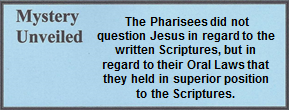
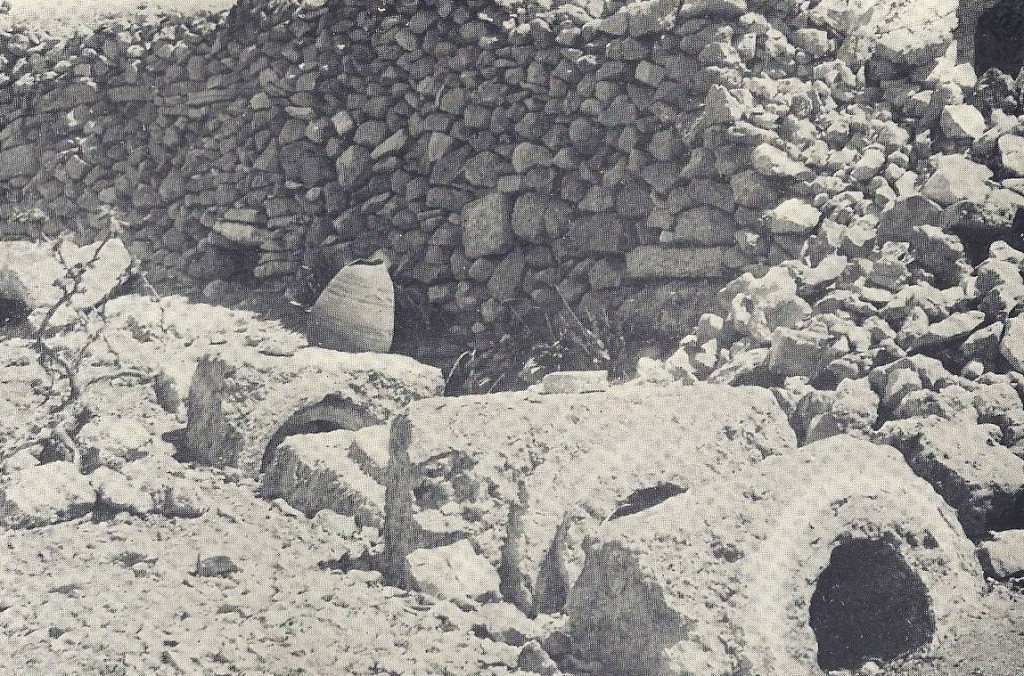
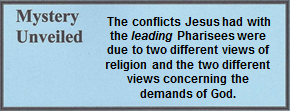
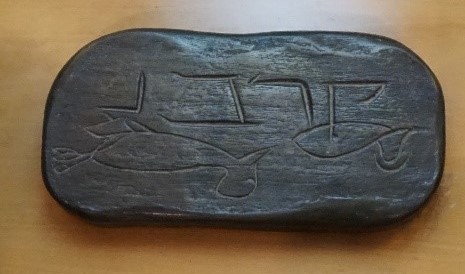 10.01.20.B. INSCRIPTION OF THE CORBAN. The meaning of the word “Corban” remained a mystery until an inscription with the etched images of two sacrificial birds was discovered. The word was a reference to an offering of two doves. Photo by Jeff Herot.
10.01.20.B. INSCRIPTION OF THE CORBAN. The meaning of the word “Corban” remained a mystery until an inscription with the etched images of two sacrificial birds was discovered. The word was a reference to an offering of two doves. Photo by Jeff Herot.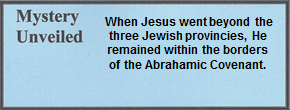
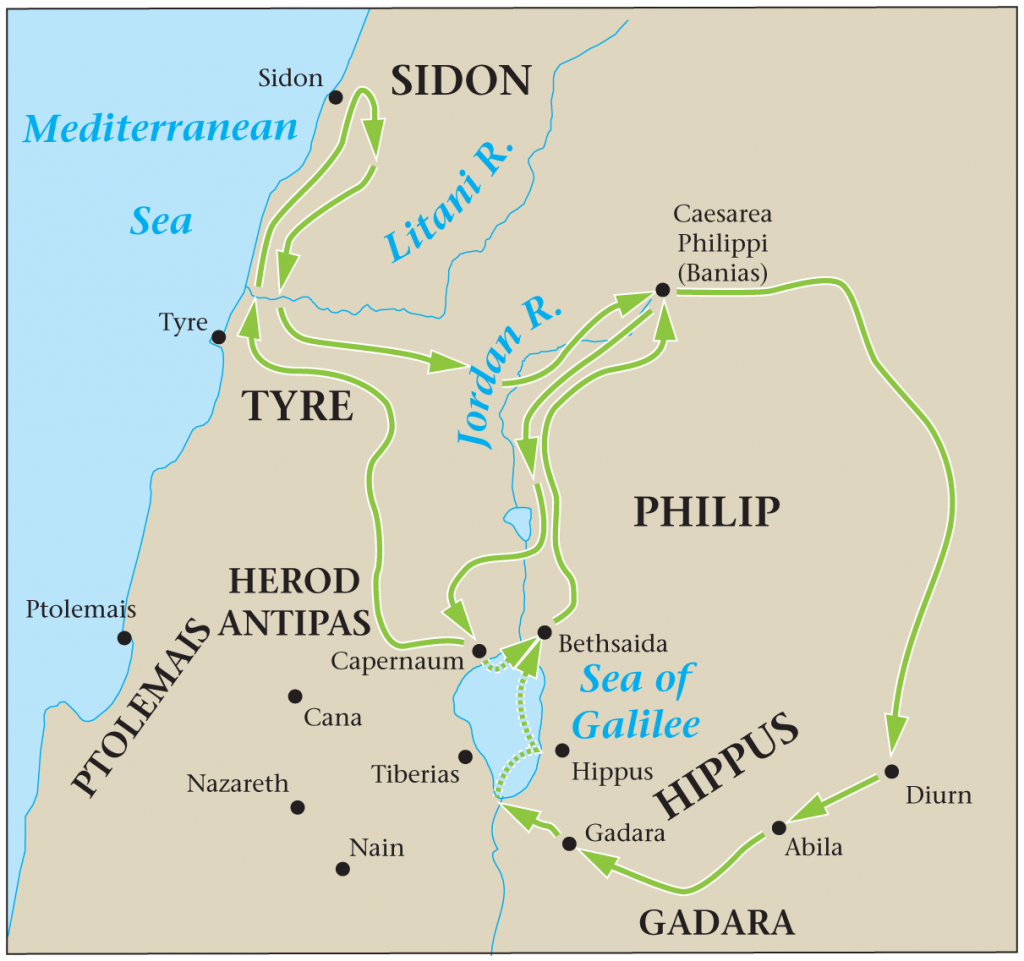
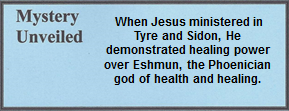
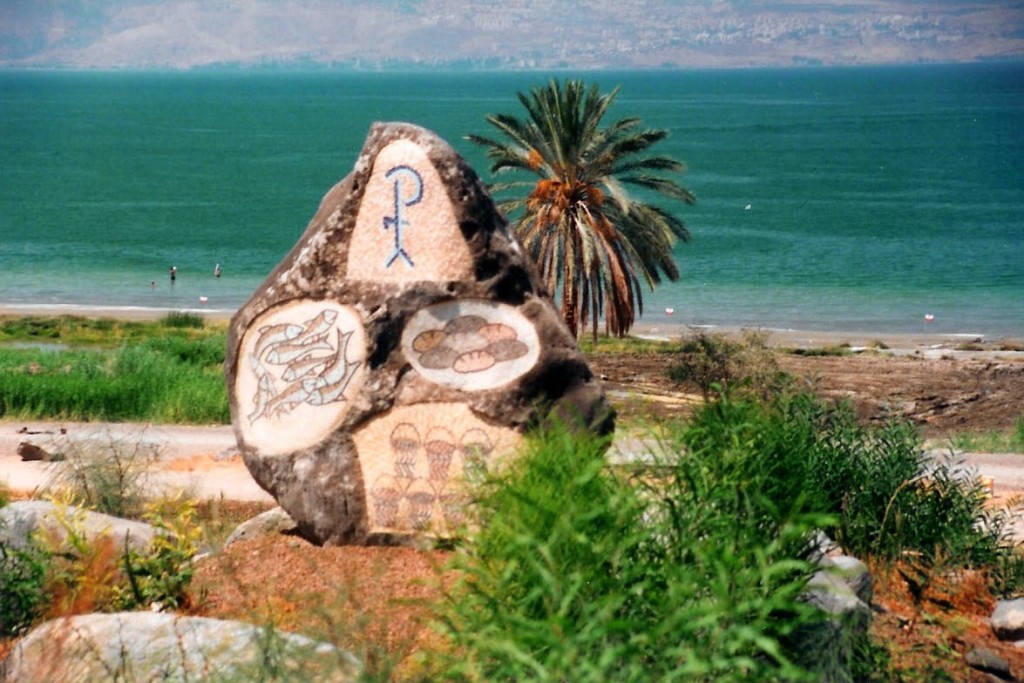

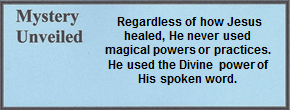





 10.01.29.D. MOSAIC OF THE GOD PAN BEFORE THE TIGER-DRAWN CHARIOT OF DIONYSIS. This 3rd century A.D. Roman mosaic depicts the god Pan with two goat horns, goat legs, and human torso, head and arms. He was considered to be the supreme god of all Greek and Roman deities, which is why the Greeks named the Pantheon in his honor. Today’s image of Satan may have originated with the image of Pan. Courtesy of the Bardo Museum, Tunis, Tunisia.
10.01.29.D. MOSAIC OF THE GOD PAN BEFORE THE TIGER-DRAWN CHARIOT OF DIONYSIS. This 3rd century A.D. Roman mosaic depicts the god Pan with two goat horns, goat legs, and human torso, head and arms. He was considered to be the supreme god of all Greek and Roman deities, which is why the Greeks named the Pantheon in his honor. Today’s image of Satan may have originated with the image of Pan. Courtesy of the Bardo Museum, Tunis, Tunisia.